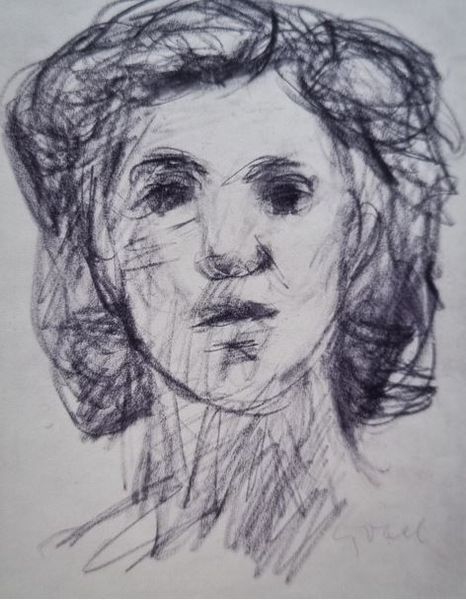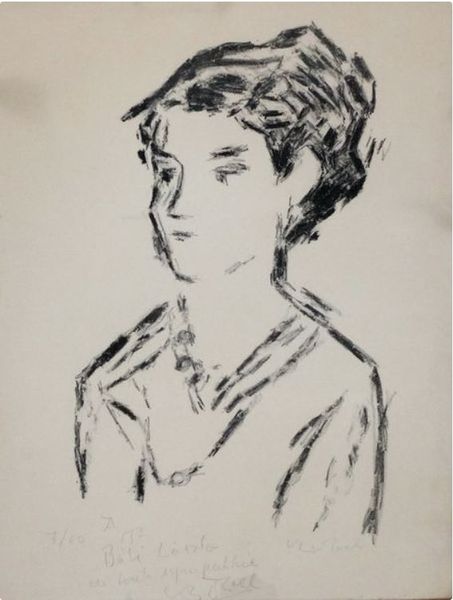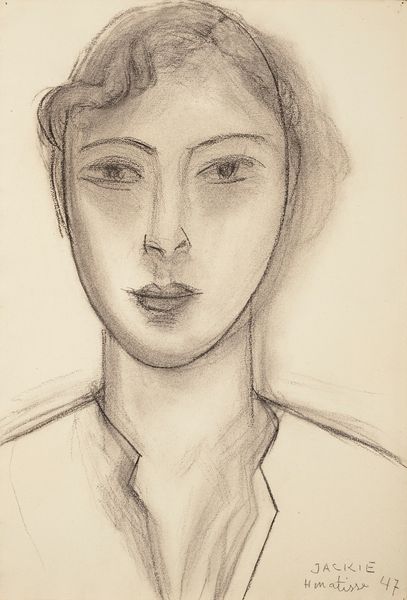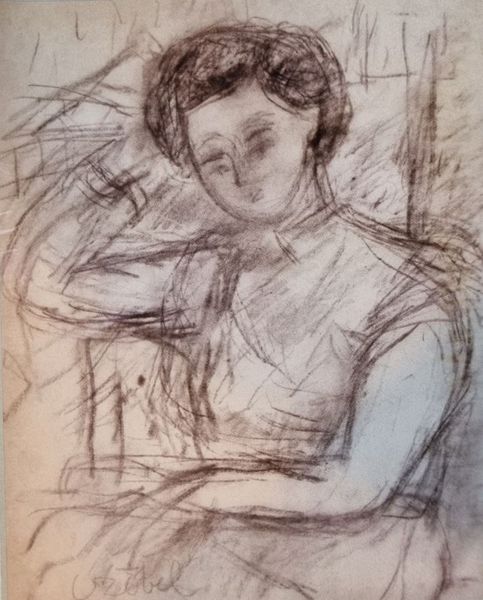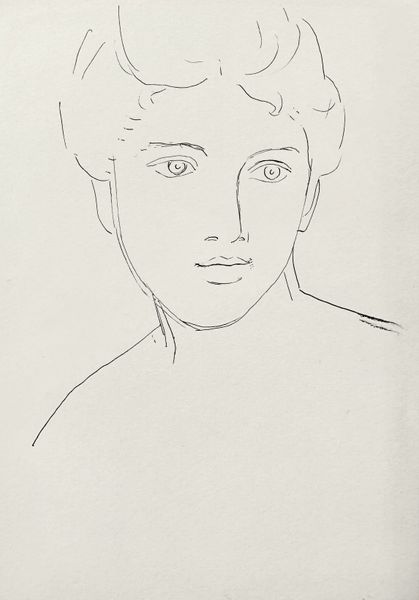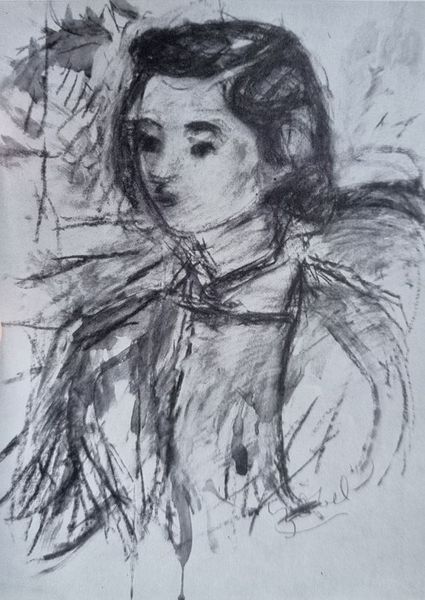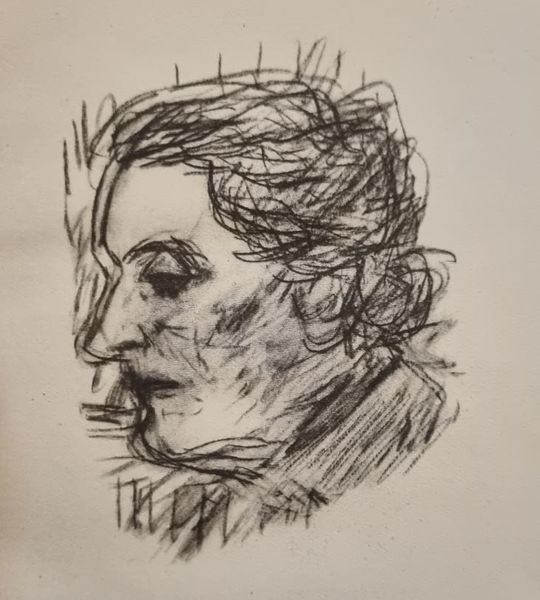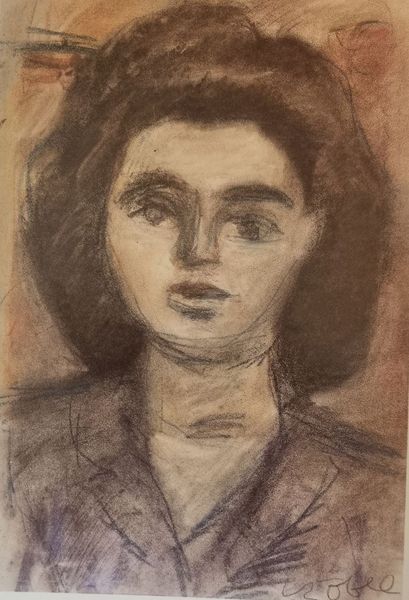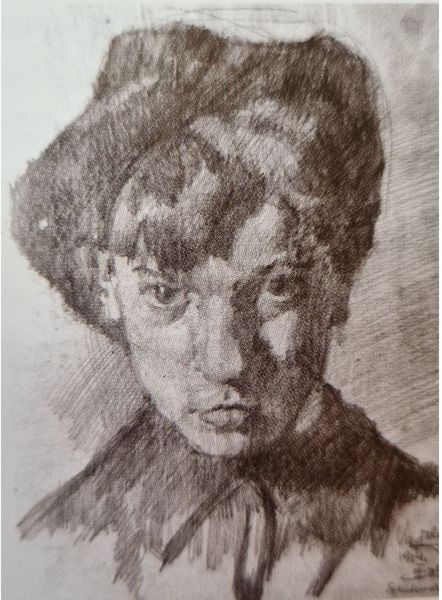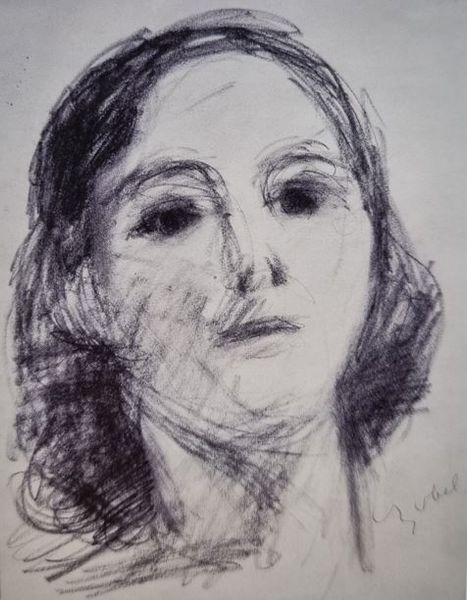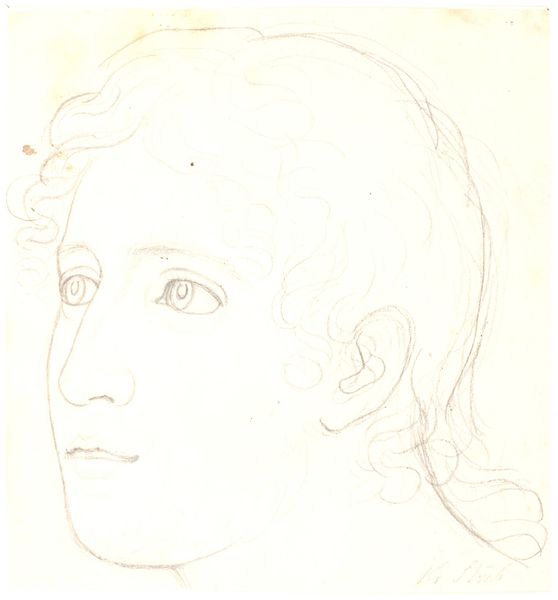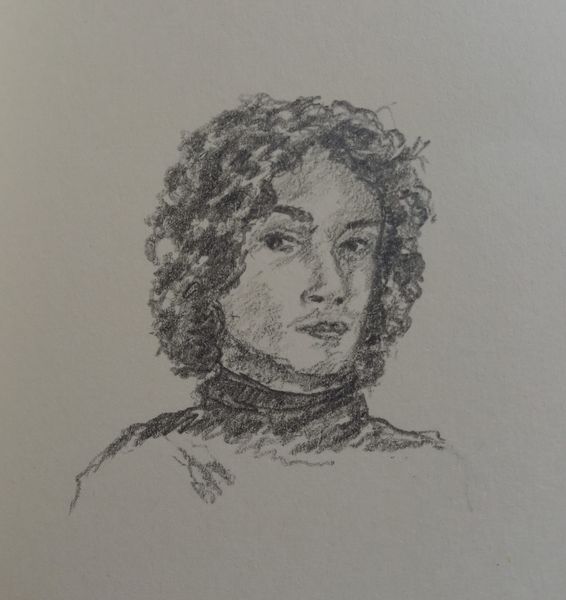
drawing, coloured-pencil, charcoal
#
portrait
#
drawing
#
coloured-pencil
#
charcoal drawing
#
figuration
#
portrait drawing
#
charcoal
#
realism
Copyright: Bela Czobel,Fair Use
Curator: Let's spend a few minutes discussing Bela Czobel's "Czobel Bela Nöi Arckép 1950", or "Czobel Bela Female Portrait 1950", a striking figurative study executed in charcoal and colored pencil. What captures your attention first about this drawing? Editor: Honestly? The quiet exhaustion. Look at the eyes – that downward cast speaks volumes. It makes you wonder, who was she? What was her day like? The materials add to it, the softness of the charcoal lending a kind of impermanence. Curator: It's fascinating how those readily available, almost mundane materials can evoke such complex emotion. Charcoal, especially, carries a certain rawness. Do you think Czobel chose those media deliberately? What might those accessible mediums suggest about Czobel’s art and practice? Editor: Definitely deliberate. Charcoal isn't precious; it’s the medium of the quick sketch, the study. But Czobel elevates it here, doesn’t he? And color pencil lends an undertone. These materials speak to an interesting social tension for mid-century figuration that existed between accessible, democratic mark making, and labor investment for its making. Think, too, how women artists may have felt these tensions even more strongly, trying to create their voices with the few resources they may have been allowed or offered. It’s intimate, this portrait. Almost like we’re intruding on a private moment. Curator: Exactly, that’s something the subtle use of colored pencil further achieves, adding just a blush of warmth to her cheeks, a gentle highlight to her hair. There’s something very vulnerable about that slight color choice. But vulnerability and immediacy do seem central to much of Czobel's portraiture, an attempt to get beyond mere likeness and delve into something more psychologically revealing. Do you think his expressionistic leanings also come to play here? Editor: I think so. This isn’t just about representing a woman, but about conveying an inner state through very considered labor and technique. And there’s the context of 1950 - post war recovery in much of Europe, but then Soviet influence firmly settled in Hungary as well. A portrait, so simple and direct can easily become a profound statement of shared resilience when located there. What is left out from portraiture also carries meaning. Curator: It certainly does. Ultimately, I keep circling back to this drawing's remarkable sensitivity. The limited palette enhances that for me. It becomes more than just a portrait of one woman; it becomes an almost archetypal image of a person grappling with their moment in time, and the weight of living. Editor: Precisely. And it's a testament to Czobel's skill, too. Using, everyday tools like pencil and charcoal, he's given us something that resonates long after we move on.
Comments
No comments
Be the first to comment and join the conversation on the ultimate creative platform.
